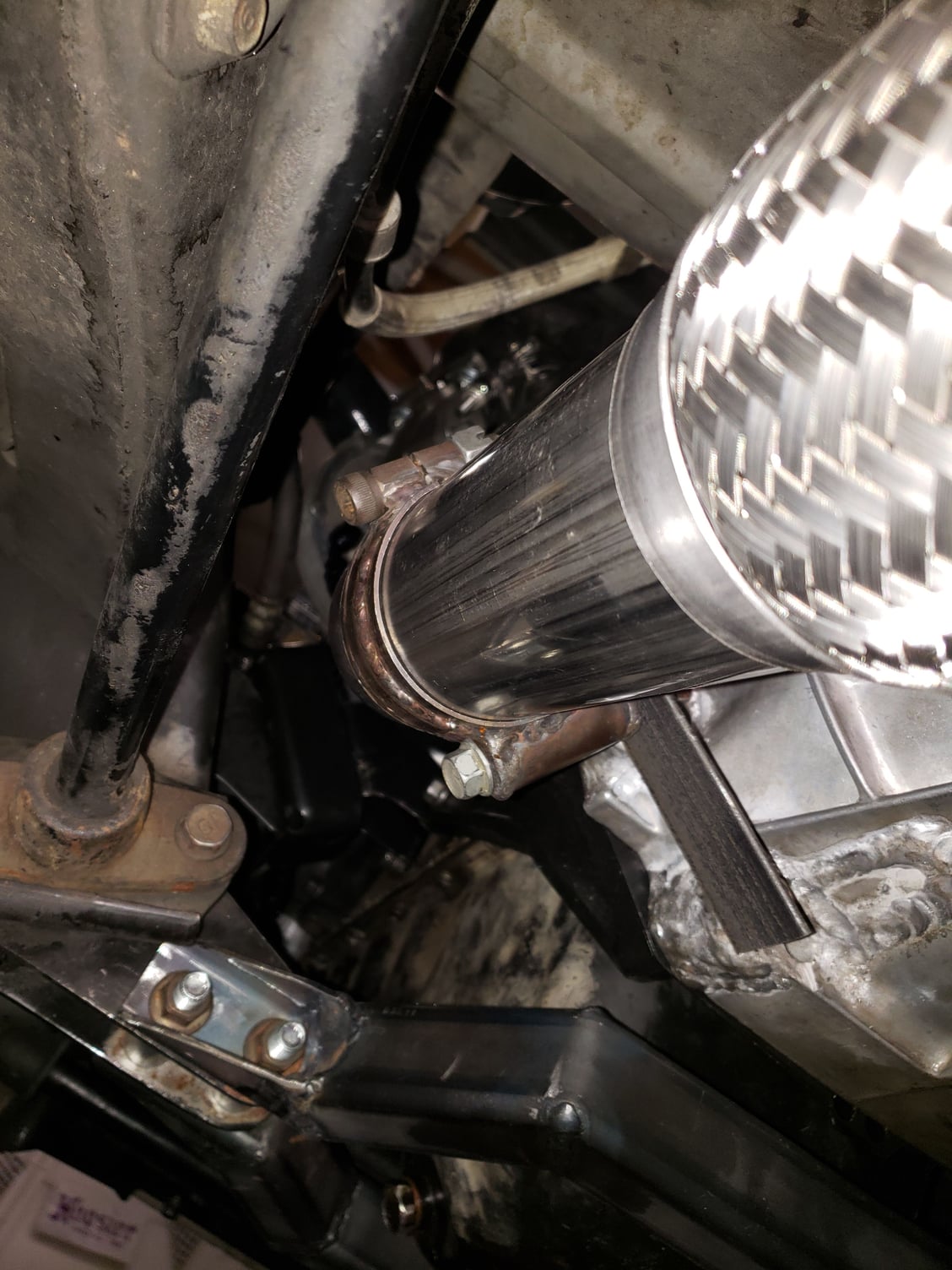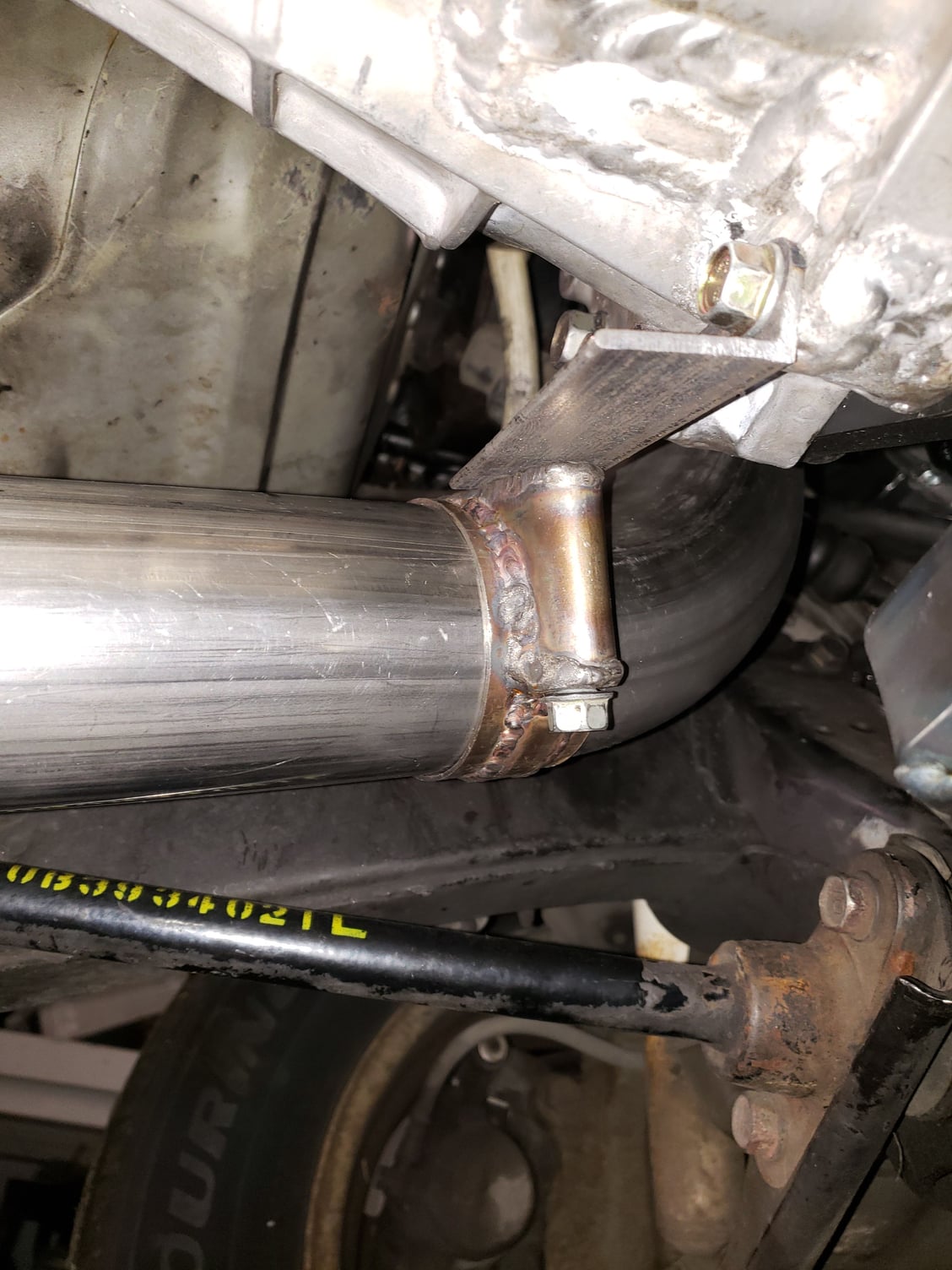DP Stud and fastener issues - Suggestions?
#42
Update - I couldn't get stage 8 fasteners in time, but inconel studs on the turbine to DP flange with Nordlocks and Philidas lock nuts (the best recommendation from Owen Developments, the local Garrett distributor) seems to have resolved the issue. Though this is with a couple of caveats.
1. I wasn't looking for the issue before, so maybe took more than a day to develop
2. I never tried more than low boost (~250whp) since I was going to wait to the afternoon for high boost in case of running into issues (that way I'd only lose a few hours of track time, not half the day!) but a rain shower just after lunch removed all grip for the rest of the day so I didn't try more boost.
Though despite this, the seeds of doubt have been planted so maybe I should be planning for a TSE kit in my future....
Does anyone know which MX5 series in the UK is closest in pace to spec miata? I'm trying to work out how hard many people have pushed this kit and comparing back to spec miata lap records seems to be the benchmark. (For reference, the track was Rockingham International Super Sports Car and I was lapping just under 1:35s on 205 Federal RS-R on 8s (and 225 Federal RS-RR on 9s -oddly no faster), ~250whp and ~#2750 weight since I was taking (heavy!) passengers all day)
1. I wasn't looking for the issue before, so maybe took more than a day to develop
2. I never tried more than low boost (~250whp) since I was going to wait to the afternoon for high boost in case of running into issues (that way I'd only lose a few hours of track time, not half the day!) but a rain shower just after lunch removed all grip for the rest of the day so I didn't try more boost.
Though despite this, the seeds of doubt have been planted so maybe I should be planning for a TSE kit in my future....
Does anyone know which MX5 series in the UK is closest in pace to spec miata? I'm trying to work out how hard many people have pushed this kit and comparing back to spec miata lap records seems to be the benchmark. (For reference, the track was Rockingham International Super Sports Car and I was lapping just under 1:35s on 205 Federal RS-R on 8s (and 225 Federal RS-RR on 9s -oddly no faster), ~250whp and ~#2750 weight since I was taking (heavy!) passengers all day)
I don't like being a high percentile user of anything since then you can run into the limits of the equipment, I'm guessing I'm 50th percentile with my TSE 11.75 kit and Xidas, but perhaps I'm getting on for 90th percentile for the FM kit so I'm mindful I may need a TSE kit in the future, especially as I plan to up the boost at the next trackday, but my time spent wrenching to time spent driving ratio is awful over the last 24 months so I'll see how I get on before doing anything major.
#43
2 further days on this and the DP studs still haven't come undone. Did 2:31 round Silverstone GP which is 9 secs quicker than the BRSCC Supercup record (with a light passenger, call it ~250whp and ~#2650). A brace like Bob's is on the list of things to do though.
I don't like being a high percentile user of anything since then you can run into the limits of the equipment, I'm guessing I'm 50th percentile with my TSE 11.75 kit and Xidas, but perhaps I'm getting on for 90th percentile for the FM kit so I'm mindful I may need a TSE kit in the future, especially as I plan to up the boost at the next trackday, but my time spent wrenching to time spent driving ratio is awful over the last 24 months so I'll see how I get on before doing anything major.
I don't like being a high percentile user of anything since then you can run into the limits of the equipment, I'm guessing I'm 50th percentile with my TSE 11.75 kit and Xidas, but perhaps I'm getting on for 90th percentile for the FM kit so I'm mindful I may need a TSE kit in the future, especially as I plan to up the boost at the next trackday, but my time spent wrenching to time spent driving ratio is awful over the last 24 months so I'll see how I get on before doing anything major.
I don't believe this is a particularly useful way of approaching the issue given the huge diversity of operating conditions and mechanical design of parts in the FM (or any turbo kit). What makes me a 90th percentile user? How do I know what the tolerances and safety factors on the design are to begin with? If I idle my FMII with AC on in traffic for 3 hours and charge temperature spikes should I throw out my intercooler? From a strictly reliability point of view (e.g. manifold flow efficiency, easy of installation, cost, etc. set aside), I haven't heard/seen any FM cast manifolds, elbows, or downpipes suffer huge cracking or warping issues -- just the DP fastener issue you described. Of course the TSE cast stainless is much more corrosion resistant (and sexy) but you're talking an order of 10s of years before that's an issue with the FM manifold (but for real the TSE kit is perdy friggin swell). So what's the problem? Simply put, creep and vibration.
The reason gas turbines are so dang expensive, and why almost every Jet engine produced outside of US/UK/RUS pales in performance and lifetime in comparison comes down to metallurgy -- which in a lot of ways is only a step or two further towards science than black voodoo magic. When you axially load any metal part under very high temperatures the part will begin to elongate over time. If that part is providing a critical function and/or is built to a tight tolerance then you've got a serious problem on your hands. Think turbine blades spinning at 30 kRPM with a .001 mm tolerance between tip and turbine wall. How do I make sure they don't elongate enough to contact the housing and blow my engine to shreds?
This is why you see so much money going into development of things like single-crystal, gooseneck grown turbine blades made of wild 30+ component superalloys which cost an EFR6258 weight's worth of gold to produce. (This creep behavior is generally thought to occur along the grain boundaries in a metal hence the monocrystalline blades I mention). Loosely, how much it effects your application is a function of loading on the part, operational temperature, and material composition. This is where Inconel comes in and trounces more traditional fasteners, as a Ni-Superalloy it exhibits vastly superior creep performance compared to standard 304 stainless or alloy steel.
Why do I care? Well it turns out jet turbine blades aren't the only problem, albeit they're one of the hardest to solve. Exhaust gases into a turbo can top out in the 800-1000 C range, and operating that close to the melting temperature of the material makes creep a real problem. Moreover, with a big heavy downpipe hanging off the end the problem compounds as creep rate scales with part stress (e.g. DP tugging force divided by stud area).
Some example creep rates at varying loading and temperatures for a couple superalloys can been seen here but the gist is that at these high temperatures it's pretty significant, and is very sensitive to overall loading as well.
(and more fun reading is attached -- seriously check out the old Argonne National Lab paper, its a hand typed study about inconel as a Nuclear Fuel Rod liner)

OK OK, but how does this make my turbo no longer trubo? That's where the vibration aspect, and high cycle times seen with track use, come into play. The function of the studs and nuts on the DP flange is to provide a high clamping force to keep the flanges mated, gas flowing where it should, and to make sure your competitors aren't running over steel exhaust parts. This is achieved by torquing the nuts such that a preload is applied by slightly stretching the stud without yielding it, essentially making it act as a super duper duper stiff spring. That's all fine and dandy, but the issue remains, all those vibrations the engine experiences hour after hour on a track really really really want to loosen that nut. This generally isn't a huge issue if the preload force provides enough friction on the face of the nut to prevent the vibrations from rotating it, or if some sort of anti-vibration device is employed (safety wire, nordlok, etc. -- I actually stumbled upon a nordlok product that incorporates a belleville washer to maintain nut preload, might be useful https://www.nord-lock.com/en-us/nord...eries-washers/).
BUT, throw creep fatigue into the mix and suddenly those studs are elongating over time, and faster at the higher heats one might experience on track. Now that preload force is shrinking and shrinking until all of the sudden there isn't enough friction to keep the nut tight, or the stud has grown enough that the distance between nut and turbo flange is actually greater than the thickness of the downpipe flange it's supposed to be holding -- all of the sudden your DP is hanging by a
My (extraordinarily wordy) point here is there's no reason to throw out a rather expensive bit of kit to solve an issue that Andrew and many others on this forum (in terms of our application at least) have already been so kind to solve for you.
Thread
Thread Starter
Forum
Replies
Last Post
JasonC SBB
Prefabbed Turbo Kits
92
02-27-2015 03:01 PM
black roadster
Miata parts for sale/trade
1
08-18-2014 05:09 PM














